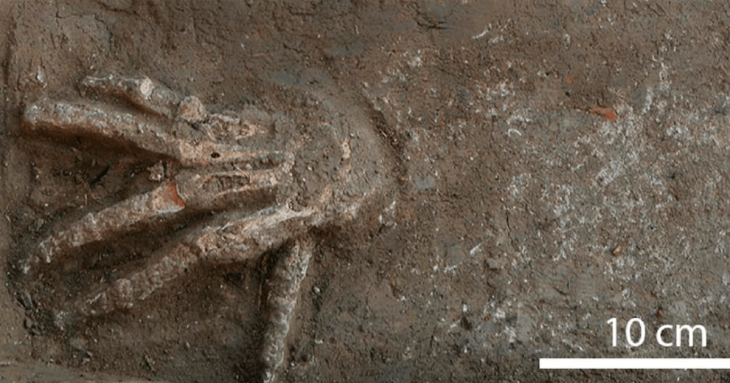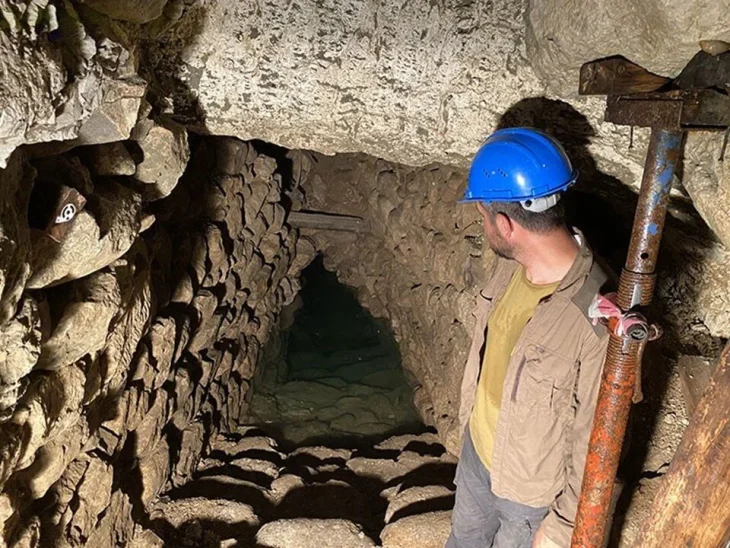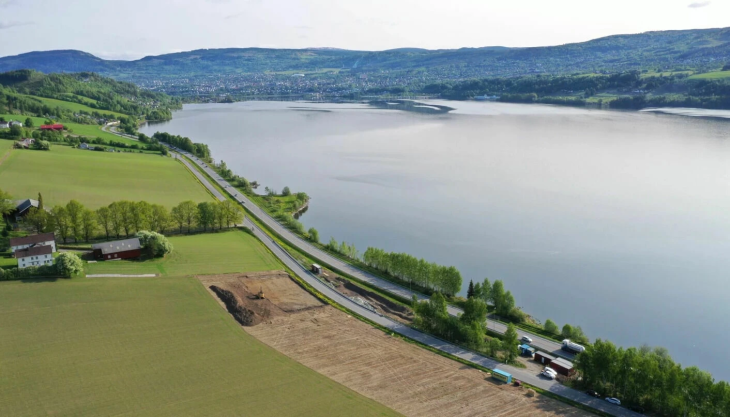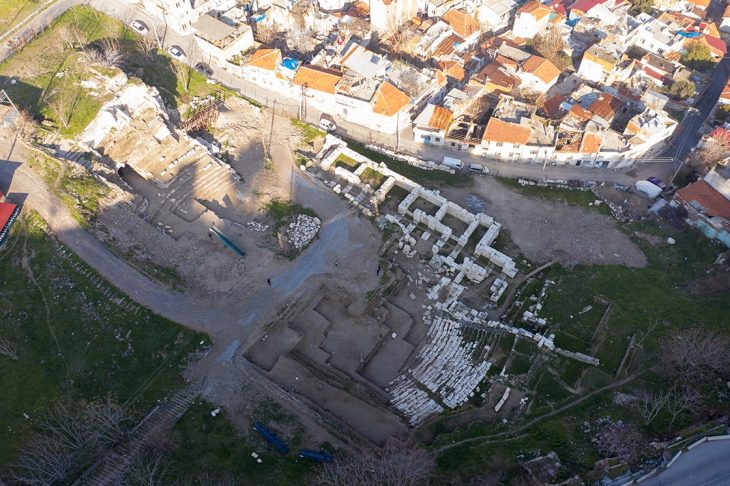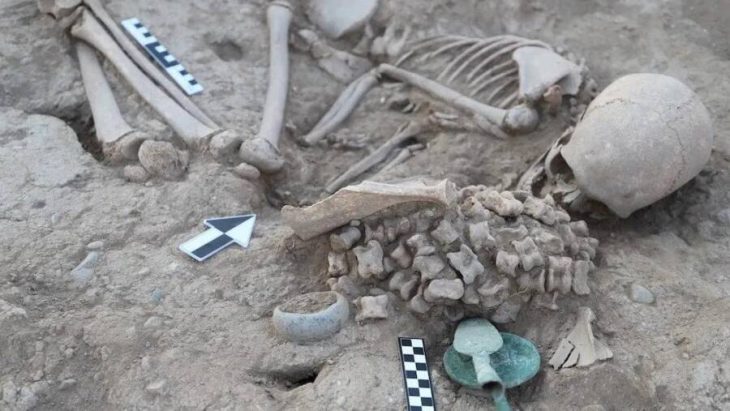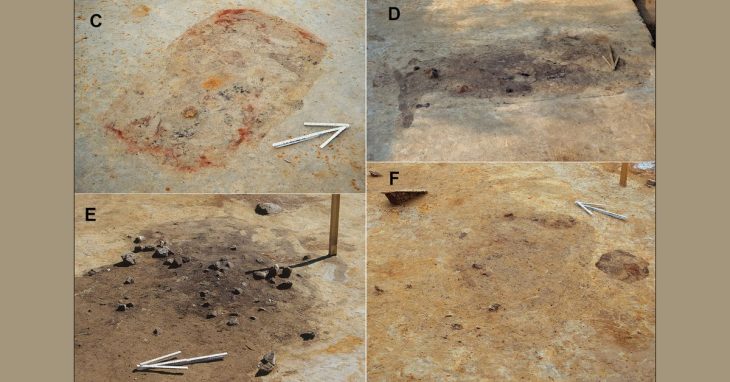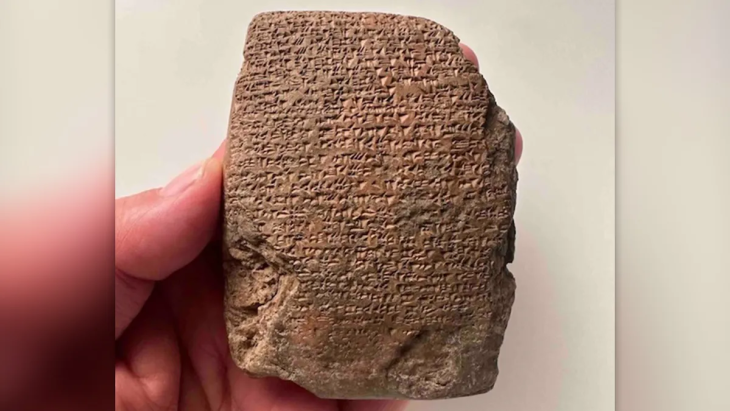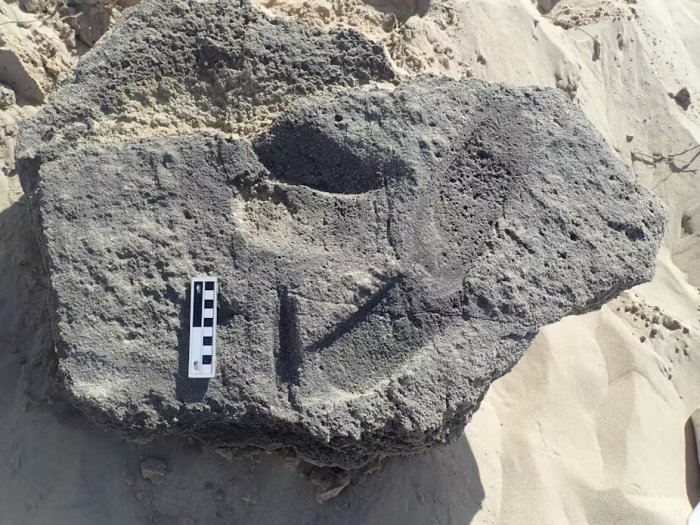Archaeologists discovered a bronze sword more than 3,000 years old during excavations in the town of Nördlingen in Bavaria, Germany.
The discovery was announced in a press release by the Bavarian State Office for the Preservation of Monuments (Blfd) on Wednesday.
The sword was found among a deposit of grave goods and weaponry, alongside the remains of a man, woman, and child. It is still unclear what relationship the people may have had with one another.
It is an octagonal sword with an octagonal hilt made entirely of bronze. The production of octagonal swords is complex because the handle is cast over the blade (so-called overlay casting). The decoration is made with an inlay and using hallmarks. While there are two real rivets, another pair of rivets is only implied. Despite the manufacturing effort and the lack of signs of a blow, it can be assumed that it was a real weapon. The center of gravity in the front part of the blade indicates a predominantly slashing balance.
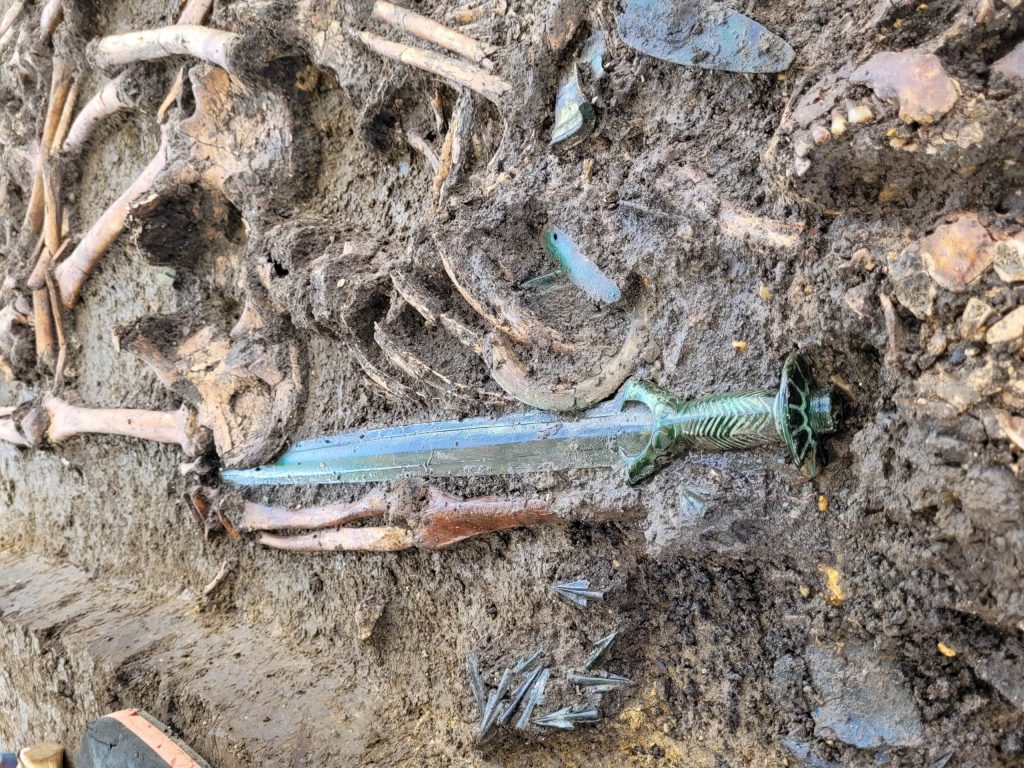
Whether the sword was Bavaria crafted or was imported is currently being investigated. There are three main distribution centers during the bronze age for octagonal swords of this type, one in Southern Germany and the others in Northern Germany and Denmark.
📣 Our WhatsApp channel is now LIVE! Stay up-to-date with the latest news and updates, just click here to follow us on WhatsApp and never miss a thing!!
Comparing the casting methods and the decoration reveals that while some of the octagonal swords in the North may be genuine imports or the work of “wandering craftsmen,” others may be copies of South German designs.
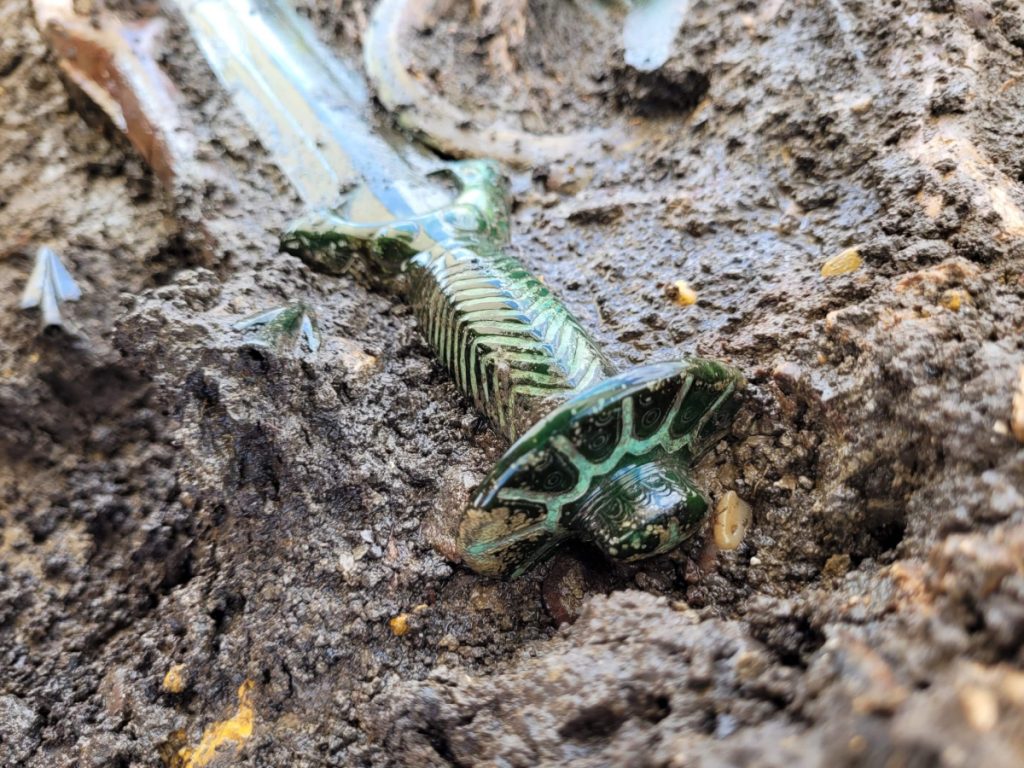
Mathias Pfeil, head of the Bavarian State Office for the Preservation of Monuments, stated: “The sword and the burial still have to be examined so that our archaeologists can classify this find more precisely. But it can already be said: the condition is exceptional! A find like this is very rare!”
Bavarian State Office for the Preservation of Monuments
Cover Photo: Dr. Woidich


